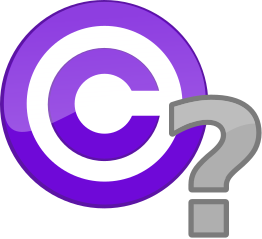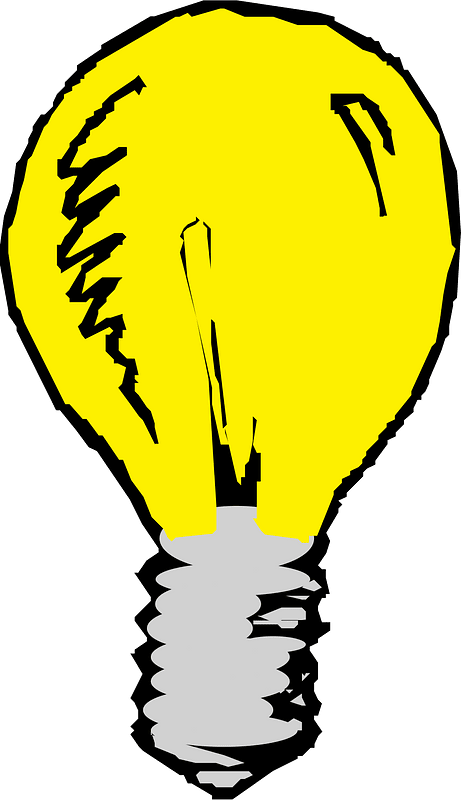10.1 Copyright and Fair Dealing Basics
Anything you find on the Internet is free, right? Nope!

As the saying goes, “Information wants to be free,” which might lead you to believe that anything you find on Google (or any other search engine) is actually free. Google will serve you all the information you need, most of it at no cost, but when it comes to locating images to use for a visual media project, do not confuse “free information” to also mean “free images.”
Copyright rules, fair dealing, and the terms of Creative Commons are complex, but knowing the basic rules will help you to ask the right questions.
Even experienced authors of visual media wrestle with the precise details about copyright. This chapter will help get you centered.
Consider the following questions as you think about your multimedia project:
- Can I use a copyrighted image in my project?
- Is the use of certain copyrighted images permissible under fair dealing?
- How can something be both copyrighted and available under Creative Commons licensing?
What is Copyright?
Canadian copyright law has been evolving since the creation and passing of the Canadian Copyright Act in 1924. The Act itself is focused on promoting use and access to copyrighted works, while giving creators and/or rights holders recognition and protection for their work (Government of Canada, 2017, para. 1-2).
Since then, numerous laws have been passed to refine the meaning of copyright and the terms upon which an author’s rights extend. The following video will give you an introduction to Copyright, public domain and fair use. While Canada has a “fair dealing” exception instead of fair use, many of the principles are the same.
Why does Copyright Matter?
Why do we have laws that restrict the copying and sharing of creative work? How do those laws work in the context of the internet, where nearly everything we do involves making a copy?
Copyright law is an important area of law, one that reaches into nearly every facet of our lives, whether we know it or not. Aspects of our lives that in some instances are not regulated by copyright – like reading a physical book – become regulated by copyright when technology is used to share the same book posted to the internet. Because almost everything we do online involves making a copy, copyright is a regular feature in our lives.
Copyright Fundamentals
You might not realize it, but copyright law is as integral to your daily life as local traffic laws. Copyright law is the area of law that limits how others may use the original works of authors (or creators, as we often call them) — works spanning the spectrum from novels and operas, to cat videos, to scribbles on a napkin.
Although copyright laws vary from country to country, there are certain commonalities among copyright laws globally, largely due to international treaties.
There are some important fundamentals you need to be aware of regarding what is copyrightable, as well as who controls the rights and can grant permission to reuse a copyrighted work.
- Copyright grants a set of exclusive rights to creators, which means that no one else can copy, distribute, perform, adapt or otherwise use the work in violation of those exclusive rights. This gives creators the means to control the use of their works by others, thereby incentivizing them to create new works in the first place. The person who controls the rights, however, may not always be the author. It is important to understand who controls the exclusive rights granted by copyright in order to understand who has authority to grant permissions to others to reuse the work (e.g., adding a CC license to the work).
- Copyright does not protect facts or ideas themselves, only the expression of those facts or ideas. That may sound simple, but unfortunately it is not. The difference between an idea and the expression of that idea can be tricky, but it’s also extremely important to understand. While copyright law gives creators control over the expression of an idea, it does not allow the copyright holder to own or exclusively control the idea itself.
- As a general rule, copyright is automatic the moment a work is fixed in a tangible medium. For example, you have a copyright as soon as you type the first stanza of your poem or record a song in most countries. Registering your copyright with a local copyright authority allows you to officially record your authorship, and in some countries this may be necessary to enforce your rights or might provide you with certain other advantages. But generally speaking, you do not have to register your work to become a copyright holder.
- Copyright protection lasts a long time. More on this later, but for now it’s enough to know that copyright lasts a long time, often many decades after the creator dies.
Consider
Do you know a professional graphic designer, photographer, artist, musician, writer or a content creator?
- How does this person earn their living?
- How does Copyright protect their interests – both financially and creatively?
- How does using someone else’s copyrighted material without permission or payment (eg. a song, a book, a website design) affect the creator/copyright owner?
Video source: LearnFree. (2018, September 17). Understanding Copyright, public domain, and fair use [Video]. YouTube. https://www.youtube.com/watch?v=XzzkSZ0Jrko
What is Fair Dealing / Fair Use?
As mentioned in the Understanding Copyright video, fair use/fair dealing is an exception to the rules of copyright, though what qualifies as fair can be tricky. The principle of Fair Use is related to American copyright law. In Canada, we rely on Fair Dealing as an exception to Canadian Copyright law.

Tip: Fair Dealing and Educational Exceptions
When living and studying in Canada, much of your use of copyrighted materials in your school work will be covered under the fair dealing exception to Canadian Copyright law, because your use of these works is educational and not-for-profit. One caveat to this use is that you MUST cite and attribute the copyrighted materials that you use.
Watch Fair Dealing with Copyright Protected Works (3 mins) on YouTube for an overview of fair dealing in your academic work
Video source: U of G Library. (2024, July 3). Fair Dealing with Copyright protected works [Video]. YouTube. https://www.youtube.com/watch?v=YleW-MLVs6Q
Your use of copyrighted content will depend on a large variety of factors. Here are some general guidelines to guide your thinking.
Always check with your professor, your institution’s library team, or your employer before embarking on projects that may use copyrighted materials under fair dealing or another exception. In a commercial / work setting, you may need to pay for access to particular software/apps, for use of materials that were free in an educational setting, and more.

Tip: Copyright and Fair Dealing at work
When you move to a work environment, the use of copyrighted materials may become much more complicated. In the work world, the use of copyrighted works may fail the fair dealing assessment because the use is no longer educational or for research purposes. Check with your employer for guidance before using any copyrighted work in commercial / for-profit situations.
Best practices for Copyright Compliance at School
- Use openly licensed resources whenever you can, giving proper attribution, especially when using images for decorative purposes.
- Cite and reference any materials that you quote, paraphrase, summarize or use as inspiration in your academic work.
- Use Fair Dealing and Educational exceptions if you need to use copyrighted content in your work – check with your professor or library team for help to apply these exceptions properly.
- Check the terms of use and license agreements for websites that provide content you may use (eg: Unsplash, Pixabay and other image collections), and software/apps to ensure your use falls within appropriate terms of service (eg: Canva, other multimedia packages).
Best Practices for Copyright Compliance at Work
- Ask your employer what software/apps, media collections and multimedia components are available and already licensed for use within the company. Often, employers will have specific software, images and other resources available.
- Read website terms of use and license agreements for any free software or apps, or content you may want to use. They may prohibit commercial use, and you may have to pay for access/use. Check with your employer to confirm that the use of these tools is appropriate.
- Use openly licensed resources that are designated for all purposes, and do not have a non-commercial clause.
- Be aware that you may need to purchase a license or pay for use of other people’s work in order to remain copyright compliant.
In the following sections of this chapter, you’ll learn more about Creative Commons and Open Licenses, Public Domain, and how to find openly licensed materials for use in your projects.
Attribution & References
Except where otherwise noted, this page is adapted from Copyright, Fair Use, and Creative Commons Basics In Writing About Literature by Rachael Benavidez and Kimberley Garcia, CC BY-NC-SA 4.0 and Copyright Basics In Creative Commons by JR Dingwall, CC BY 4.0. / Combined sections of each page and streamlined for student understanding, added original content and focus on Fair Dealing (Canada).
Licenses and Attributions from original source
- The content of this lesson is an Open Educational Resource with a Creative Commons license: The Basics of Copyright, Fair Use, and Creative Commons(opens in a new tab) by Granite State College is licensed under a Creative Commons Attribution-NonCommercial-ShareAlike 4.0 International License(opens in a new tab), except where otherwise noted.
- Adapted from Covell, S. (2022). Visual Communication: A General Education textbook for the study of visual rhetoric. Granite State College. https://granite.pressbooks.pub/comm543/(opens in a new tab)
- Government of Canada. (2017, October 16). History of Copyright in Canada. Canada.ca. https://www.canada.ca/en/canadian-heritage/services/history-copyright-canada.html

